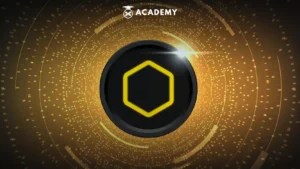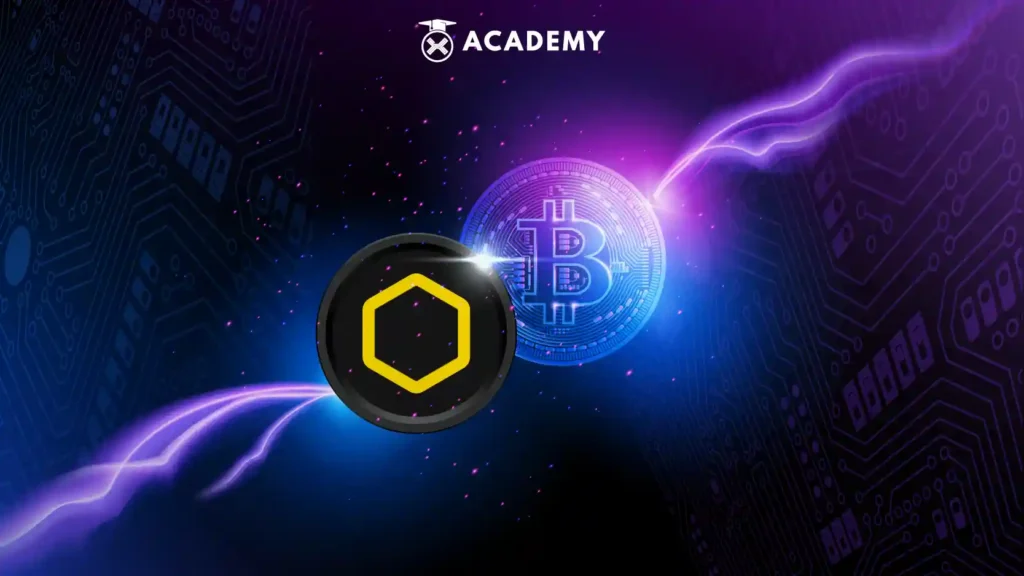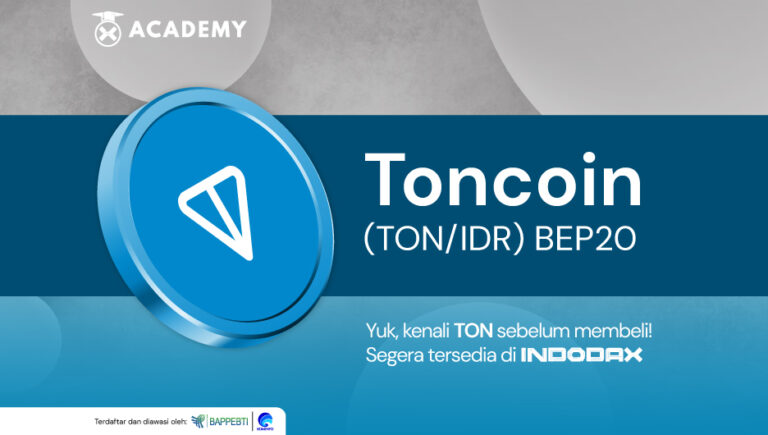With rapid developments in blockchain technology, one project attracting attention is CORE DAO. CORE DAO has become an innovation pioneer with a strong vision and use of advanced technology.
Through the integration of Zero-Knowledge Proof (ZKP) technology, CORE DAO offers guaranteed privacy, scalability, and an unprecedented level of security.
Core DAO is a decentralized autonomous organization (DAO) active in developing the Satoshi Plus ecosystem. This ecosystem, a Layer-1 blockchain, combines the decentralization and security advantages of Bitcoin with the scalability and utility offered by the Ethereum blockchain.
So, to understand what CORE DAO is, its history and inventor, how it works, its main role in the ecosystem, and how it compares to other blockchains, check out the following review!
What is Core DAO?

CORE or Core DAO is a Layer-1 blockchain project that integrates systems from Bitcoin and Ethereum through a consensus mechanism known as Satoshi Plus.
This approach is an optimal combination of Proof of Stake (PoS) and Proof of Work (PoW) features. CORE aims to introduce the growth of Satoshi Plus consensus as well as harness the power of blockchain technology.
Based on the Core DAO white paper, the main vision is to provide a blockchain that is scalable, secure, decentralized, and transparent for all users.
In other words, Core DAO is here to overcome the limitations of scale and decentralization support that PoW and PoS have. These experiments reflect principles such as sharding, sidechain, and state channel mechanisms.
With this approach, Core DAO aims to create a new blockchain independently, allowing it to operate within the Web3 ecosystem.
However, the identity of the creator of Core DAO is not revealed. Even though an event poster named BlockSplit listed Schwarze Katze as the figure behind Core DAO, his identity remains unclear.
Additionally, one of the leading figures at Core DAO is Brendan Sedo, a Portuguese developer who previously served as CEO at Joist, a financial invoicing app for contractors.
History and Inventors of Core Dao
Rich Rines, one of the early contributors to Core DAO, provides an in-depth perspective on the unique approach taken by Core DAO in solving the blockchain trilemma through the Satoshi Plus consensus mechanism.
By combining Bitcoin’s computational advantages to achieve decentralization and Delegated Proof of Stake (DPoS) advantages that enable scalability, Rines noted that Core DAO succeeded in creating a layer-1 solution that unites the three core elements of blockchain technology.
How Core Dao Works
Quoting coinmarketcap.com, Core DAO created an innovative consensus mechanism called “Satoshi Plus,” a complex combination of Bitcoin proof-of-work and Ethereum proof-of-stake. The following illustration explains the complex network of relationships of Satoshi Plus:

(Image source: coinmarketcap.com)
Core Dao’s Primary Role in the Ecosystem
Quoting coinmarketcap.com, there are several main roles in the Core ecosystem that you need to know. The following are the main roles of Core Dao in the ecosystem, including:
- Validator: Responsible for block production and checking transactions. Validators register and deposit CORE to qualify for validator selection.
- Relayer: Tasked with sharing information from Bitcoin to the Core network. Relayers also need to register and deposit CORE.
- BTC Miner: Helps secure the Bitcoin network. BTC diggers can join the Core blockchain by handing over their mining power to a validator.
- CORE Holders: Own CORE and can participate in staking by handing over their holdings to a validator.
- Verifier: Checks for any bad behavior on the network and can report it. Bad behavior by validators may result in deductions from their deposits.
Validator Selection Process
- Validator Selection: A mechanism to select the top 21 validators using a score based on how much BTC hash power and CORE assets the validator owns. Updated every 200 blocks.
- Round: A time period in which validators take turns creating blocks. At the end of each round, rewards are distributed, and new validators are selected.
- Slot: A small part of a round where a validator can create a block.
- Epoch: A period during which the system checks that all validators behave correctly. Incorrect behavior may result in removal from the validator group.
Satoshi Plus Consensus
The Satoshi Plus mechanism uses the hash power delegated by BTC miners to Core validators to synchronize blocks mined by BTC miners with the Core network.
Additionally, DPoS consensus allows token holders to vote and select a set of validators. This allows small token holders to participate in network governance.
The validator selection process follows a complicated formula, which selects validators from PoW and DPoS consensus mechanisms.
A total of 21 validators with the highest scores in the formula were selected for the 200-block period. Validator misbehavior results in withholding and holding mechanisms. Blocks are mined every 10 minutes, like in the Bitcoin network.
Rewards are distributed among validators and the System Reward Contract. Currently, 90% of the rewards are paid to validators. Reward Contract The system pays rewards to relayers and verifiers.
Core DAO Tokenomics
Quoting coinmarketcap.com, CORE is the original utility token of the blockchain. Used for staking and paying gas fees. Core follows the Bitcoin token model, with a total CORE supply of 2.1 billion.
Core also promises to burn a percentage of block rewards and gas fees, similar to the Ethereum model.
The token emission schedule will be paid for over 81 years. The network hopes to encourage Bitcoin miners to hand over their hash power to the network once significant mining rewards in Bitcoin cease around 2040.
Token supply is allocated as follows:
- Mining Nodes (839.9 million CORE tokens; 39.995% of total supply): distributed over 81 years.
- Users (525.6 million CORE tokens; 25.029%): Core launched its first airdrop in February 2023.
- Contributors (Current and Future) (315 million CORE tokens; 15%)
- Reserve (210 million CORE tokens; 10%)
- Wealth (199.5 million CORE tokens; 9.5%)
- Relayer Rewards (10 million CORE tokens; 0.476%)
When Did Core Dao Become Popular?
Core DAO has adopted zero-knowledge proof (ZKP) technology into its blockchain structure, increasing privacy, scalability, and security.
ZKP allows users to prove the truth of a statement without having to reveal additional information, thereby maintaining confidentiality and protecting sensitive data.
By incorporating ZKP technology, Core DAO opens the door to innovations in smart contract functionality and expands the scope of applications that can be implemented on the Core DAO platform.
With a strong vision, advanced technology, and support from the community, Core DAO promises a bright future in the blockchain world. As the blockchain industry continues to evolve, zero-knowledge-proof technology is expected to play an important role in shaping the future of decentralized applications (dApps) and the blockchain ecosystem.
Comparison of Core Dao with Blockchain, Which is Better?

Quoting coinmarketcap.com, Core DAO emphasized that this platform significantly leverages the advantages of other blockchains and combines the strengths of each while reducing their weaknesses. The results can be seen from the comparison of Core with other blockchains, including:
1. Core vs Bitcoin
Bitcoin was the first popular blockchain and the first blockchain to introduce proof-of-work. It has become the most decentralized chain but can only process seven transactions per second. According to Core, the Core blockchain improves Bitcoin with higher throughput.
2. Core vs Ethereum
Ethereum is the most popular smart contract blockchain and created the Ethereum Virtual Machine. Ethereum can also process more TPS than Bitcoin but is still limited to 15 TPS.
Core aims to improve Ethereum with better scalability and less centralization, which he says is still a risk even with Ethereum’s scalability plans.
3. Core vs Solana
Solana is a chain with high TPS and short block times. However, the requirements for validators go far beyond those of other blockchains.
Additionally, Solana’s network availability lags behind other chains. Core aims to excel in both aspects.
4. Core Dao vs BNB Chain
BNB Chain was initially forked from the Ethereum chain and uses a Proof of Stake Authority consensus mechanism. It has faster transaction times and higher throughput, although this comes at the cost of decentralization.
Pi Network and Core DAO, Which One is Superior?
Everyone has a personal view on which is better between Pi Network and Core DAO. However, if asked to determine which is better, the answer depends on the needs and preferences of each user.
For example, Pi Network can be ideal for beginners new to blockchain technology. This project is also suitable for those looking for a blockchain platform with the convenience of free coin mining.
Meanwhile, Core DAO may be better suited to those interested in a community-based governance model, including recognizing new blockchains as a way to interact. It is important to note that both of these blockchain projects are still in the development stage.
Judging the merits of either of the two can be quite difficult. Although theoretically, Core DAO has an advantage with projects already active on mainnet.
On the other hand, the Pi Network hackathon stands out in terms of utility with various unique protocols in its ecosystem. Core DAO also has the advantage of building a complex user ecosystem after operating on the mainnet.
Pi Network’s testnet ecosystem also provides an overview of how the mainnet ecosystem will function when released.
With more than 360 hackathon submissions in the first quarter of 2023, despite superior comparisons, both offer such exciting prospects that they have become a topic of discussion on social media.
Crypto asset projects, with their uniqueness, have an appeal to various individuals. Considering the many interesting crypto projects available, the choice can be tailored to individual wishes and preferences.
Conclusion
In conclusion, CORE DAO, a decentralized autonomous organization, is important in depicting innovation in the blockchain ecosystem.
By understanding the essence of CORE DAO, we see how the platform incorporates the latest technologies, such as zero-knowledge proof, to increase privacy, scalability, and security within its blockchain.
CORE DAO in the blockchain ecosystem is important because of its major contribution to solving the blockchain trilemma, namely providing a balanced solution between decentralization, scalability, and security.
CORE DAO has also pioneered new consensus mechanisms, such as Satoshi Plus, which combines the power of Proof of Work and Delegated Proof of Stake. Therefore, CORE DAO plays an important role in shaping the future of blockchain technology by introducing its innovative approach.
As an evolving platform, CORE DAO has the potential to significantly impact the blockchain ecosystem’s evolution towards a higher level of maturity.
Invest in Crypto Assets on INDODAX
So, now you understand what CORE DAO is, its history and inventor, how it works, its main role in the ecosystem, and how it compares to other blockchains.
Next, if you are interested in investing in crypto, you should check the crypto market on INDODAX Market. Later, after checking the price, you can buy crypto assets on a trusted crypto exchange only on INDODAX. It is important to know that INDODAX is a leading platform and a pioneer in trading (buying and selling) crypto assets in Indonesia.
Apart from that, as a trusted crypto asset buying and selling platform to date, INDODAX continues to provide reliable services to investors. INDODAX also provides easy and comfortable access to the crypto asset market and guarantees user transaction security.
So what are you waiting for? Let’s start investing in crypto assets now with INDODAX!








